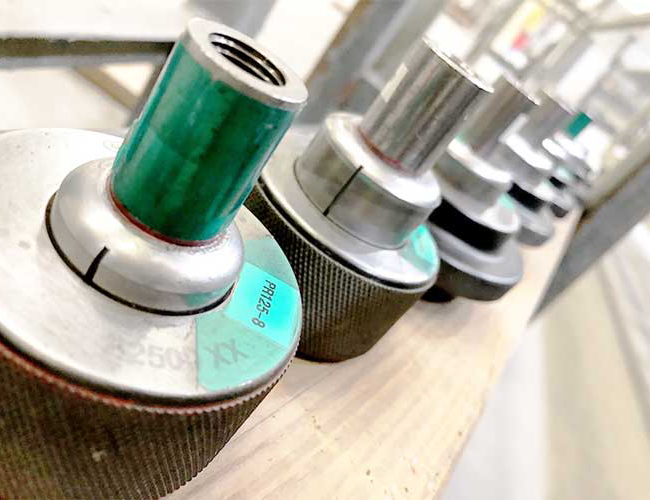Electroless Nickel: The Premier Choice for Corrosion Protection
Electroless Nickel: The Premier Choice for Corrosion Protection
Blog Article
In industrial settings, metal components face relentless exposure to harsh conditions, including chemicals, moisture, and extreme temperatures. This exposure can lead to significant wear and tear, compromising the integrity and lifespan of the metal. Corrosion, driven by chemical reactions, oxidation, and environmental factors, presents a critical threat that can result in costly repairs and replacements, as well as valuable downtime. To effectively combat these issues, it is essential to apply reliable anti-corrosion coatings, and electroless nickel plating has proven to be one of the most effective methods available.
This article delves into the necessity of anti-corrosion coatings, compares various protective methods, and highlights why electroless nickel plating often emerges as the superior choice for safeguarding industrial equipment and parts.
The Necessity of Anti-Corrosion Coatings
In industrial environments, metal parts frequently endure constant stress from friction, exposure to corrosive substances, and challenging environmental conditions. Without adequate protective coatings, these components can deteriorate quickly, leading to rust, oxidation, and eventual failure. The financial implications of replacing corroded parts can be substantial, and the subsequent downtime can severely impact productivity.
Anti-corrosion coatings act as a vital barrier against these detrimental elements. Common options for metal protection include powder coating, electroplating with nickel, and electroless nickel plating.
Comparing Coating Methods
- Powder Coating: This method involves applying a dry powder to the metal surface, which is then heated to form a solid protective layer. While powder coating is durable and provides a smooth finish, it can be less effective in high-friction applications, where it is prone to chipping and cracking.
- Electroplating with Nickel: In electroplating, an electric current is utilized to deposit a nickel layer onto the metal part. This technique produces a strong, uniform coating that resists corrosion and wear. However, it requires a conductive surface and may not ensure even coverage on parts with complex geometries.
- Electroless Nickel Plating: Unlike the previous methods, electroless nickel plating uses a chemical bath to deposit a nickel-phosphorus alloy uniformly across the metal surface, eliminating the need for electrical current. This process allows for consistent coverage on intricate parts, making it an ideal choice for components that require robust protection against corrosion, wear, and friction.
Why Electroless Nickel Plating is the Optimal Choice
Electroless nickel plating provides several advantages that make it a preferred solution for protecting metal components:
- Uniform Coverage: One of the primary benefits of electroless nickel plating is its ability to coat metal parts evenly, regardless of shape or complexity. This is especially beneficial for intricate components such as production tubing, gears, and valves. In industries dependent on durable metal components, such as oil and gas, electroless nickel coating for barrels ensures comprehensive protection across all surfaces.
- Outstanding Corrosion Resistance: Electroless nickel plating offers exceptional resistance to corrosion, particularly in environments where components are exposed to chemicals, saltwater, or acidic conditions. The coating forms a protective barrier that prevents the base metal from reacting with these harmful substances, which is crucial for sectors like petrochemical and marine engineering.
- Enhanced Wear and Friction Resistance: In addition to protecting against corrosion, electroless nickel plating significantly increases the hardness and wear resistance of metal parts. This makes it an excellent option for components that encounter high friction, such as gears and extraction tubes, reducing the likelihood of metal fatigue.
- Increased Durability: The uniform thickness achieved through the electroless process contributes to the durability of even the most delicate components. This ensures that metal plating for steel pipes and parts used in construction and manufacturing remains effective even under demanding conditions.
- Cost-Effective Solution: While the initial investment in electroless nickel plating may be higher than other methods, its long-term benefits—including reduced maintenance and replacement needs—make it a financially sound choice. The extended lifespan of coated components translates to substantial savings over time.
Choosing the Right Plating Partner
Selecting a reputable provider is essential when applying anti-corrosion coatings. An experienced industrial metal plating company in Texas can offer the expertise required to choose and apply the right coating for your specific applications. Whether you need protection for steel pipes, valves, or production tubing, selecting the appropriate coating solution is vital for ensuring the longevity and performance of your equipment.
For businesses in the oil and gas or manufacturing sectors, partnering with anti corrosion metal coaters specializing in electroless nickel plating can greatly reduce the risk of part failure and extend the operational life of machinery and equipment.
In conclusion, protecting metal components from corrosion, wear, and friction is critical for maintaining the functionality and longevity of industrial equipment. Although there are various coating options, including powder coating and electroplating, electroless nickel plating stands out due to its uniform coverage, superior corrosion resistance, and enhanced durability. Whether you require metal plating for steel pipes and parts or specialized electroless nickel coating for barrels, this method provides reliable, long-lasting protection.
For organizations looking to invest in the best anti-corrosion solutions, collaborating with an experienced industrial metal plating company in Texas ensures that your components are expertly protected and capable of withstanding the most challenging environments.
Report this page